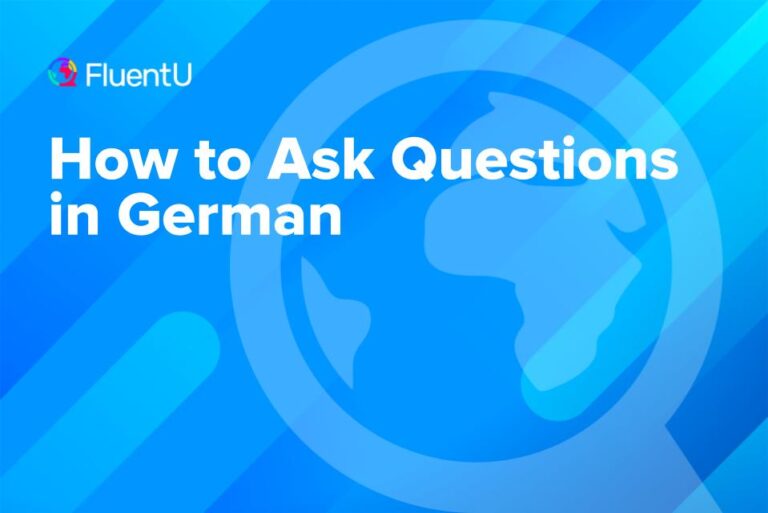4 Christmas Cartoons for German Learners

German Christmas cartoons are an incredibly fun way to learn, and with them, you’ll pick up all kinds of vocabulary and grammar that you can use during the holidays as well as year-round.
Keep reading to learn about four of my favorites, along with key vocabulary and grammar for each video.
Download: This blog post is available as a convenient and portable PDF that you can take anywhere. Click here to get a copy. (Download)
1. “Der Nussknacker und der Mausekönig”
This cartoon is from an 1816 story by E.T.A. Hoffmann, which was adapted into the beloved Christmas ballet “The Nutcracker” by Pyotr Tchaikovsky.
In Hoffmann’s story, a young girl receives a nutcracker for Christmas and it comes to life, defeats an evil Mouse King in her house, then whisks her away to a magical land full of dolls. In the ballet, the Nutcracker takes the young girl to a land full of dancers inspired by various world cultures.
This cartoon version is a direct-to-video adaptation from 2004, and more closely tracks the story in Hoffmann’s original tale, although it uses some music from Tchaikovsky’s famous ballet as well.
Those who can play Region 2 DVDs can check for the DVD on Amazon.de.
Vocabulary from “Der Nussknacker und der Mausekönig”
der Nussknacker — nutcracker
der Mausekönig — mouse king
der Neffe — nephew
auspacken — unwrap
die Kristallkugel — crystal ball
das Schicksal — fate
Ich versuche mein bestes — I’ll try my best
die Standuhr — grandfather clock
Grammar in “Der Nussknacker und der Mausekönig
Wie fühlst du dich? — How do you feel?
This is an example of a reflexive verb, or a verb that takes the same subject and object. Reflexive verbs are common in German, so learn this construction!
im sommer — in the summer
This is an example of a dative plus preposition construction. It’s a shortened version of in dem Sommer. In is a preposition that takes the dative, and since Sommer is masculine, its dative article is dem. In plus dem equals im. This is a rule usually learned by beginners, but it’s still tricky and can trip up more advanced learners, so pay attention.
Ich muss das wissen — I must know it
This is an example of a modal verb with an infinitive. Müssen (must) is one of the six modal verbs, a “helping verb” of sorts that accompanies an infinitive in a sentence. This is only one example of a modal verb in this movie; see if you can spot some of the others!
2. “Die Wichtelmänner”
This is a cartoon version of “The Elves and the Shoemaker,” a Christmas story recorded by the Grimm Brothers in their famous book of fairy tales.
“The Elves and the Shoemaker” tells the story of a poor man and his wife who are barely scraping by, but receive help in the night from mysterious elves who help them assemble their shoes.
The story appeared in the original edition of “Grimm’s Fairy Tales,” which was published on December 20, 1812—a release date that means these tales are often associated with Christmastime.
This cartoon version is specifically designed for language learners by Bookbox.com.
Vocabulary from “Die Wichtelmänner”
der Wichtelmann — a literary term for an imp, dwarf, elf or other supernatural being
das Leder — leather
nähen — to needle/sew
der Arbeitstisch — work table
dankbar — grateful
winzig — tiny
die Mitternacht — midnight
in Windeseile — fast as the wind
Grammar in “Die Wichtelmänner”
obwohl — although (:22)
Obwohl is a word that appears in subordinate clauses and necessitates moving the verb to the end of the clause. This example of obwohl is particularly useful because it’s an example of the word appearing at the beginning of the sentence.
This may make you think that obwohl is part of the sentence’s main clause, and that the verb should appear in second position. However, in this sentence, the subordinate clause appears first.
um ein letztes paar Schuhe zu machen — to make a last pair of shoes (:47)
This is an example of an um…zu construction, which is a way to say that you are doing something in order to achieve a desired result.
sah — the literary past tense form of sehen, or “to see” (1:07)
Watch out for the other uses of the literary past tense in this cartoon!
3. “Wir Kinder aus dem Möwenweg”
This is a Christmas-themed episode of an animated version of a popular German children’s book.
The 2000 book, by Kirsten Boie, tells the story of a young girl named Tara whose family moves to a community called Möwenweg, where she’s happy to find lots of nice neighbors and other kids to make friends with.
In this episode, Tara is impatiently waiting for Christmas to arrive, and must distract herself with Christmas decoration and cooking preparations.
You can buy the DVD on Amazon.
Vocabulary from “Wir Kinder aus dem Möwenweg”
der Heiligabend — Christmas Eve
verschneit — snowy
der Tannenbaum — archaic word for Christmas tree
feierlich — festive
gebastelt — handmade
die Lichterkette — holiday lights
Es schneit — It’s snowing
Blatt — leaf
Grammar in “Wir Kinder aus dem Möwenweg”
Wir freuen uns auf — We are looking forward to (from the episode title)
This is an example of a verb that takes a certain preposition—in this case, freuen plus auf.
mein eigenes Handy — my own phone
Notice that eigenes, which means “own,” has its own special ending based on the case and the gender of the noun in the sentence—just like any other adjective.
geschmückt werden — became decorated
Here’s an example of the passive voice in German, a construction that uses the verb werden (which is a word that you’ll see a lot in the German language).
4. “Weihnachtsgeschichte”
This is a German cartoon version of the original Christmas story, from the Bible, of the birth of Jesus.
Whether you celebrate Christmas for religious reasons, for secular reasons, or both, watching this video will teach you plenty of interesting vocabulary. And plus, most people know this story—so you’ll be at an advantage while watching this in puzzling out the meaning of various vocabulary words.
Vocabulary from “Weihnachtsgeschichte”
die Bibel — Bible
der Zimmermann — carpenter
verändern — to change
schwanger — pregnant
die Geburt — birth
der Platz — place
der Stall — stable
die Nachricht — news
Grammar in “Weihnachtsgeschichte”:
scheinen…zu sein — appeared…to be (1:02)
This is a great way to explain to someone that something appeared in a certain way (even if it didn’t).
deshalb — therefore (3:02)
Deshalb is a word used in a subordinate clause. Pay special attention to the word order after deshalb; the verb goes in the second position, and the rest of the words follow after.
König der Juden — King of the Jews (6:03)
This is an example of the German genitive, or possessive case—perhaps the rarest of the four cases, but still essential to know.
If you watch all four of these videos, paying attention to vocabulary, grammar and the German cultural lessons imparted in each, you’ll close out the year having bolstered your German skills.
You can continue your studies by finding more cartoons and other authentic German media, about Christmas or anything else your learner’s heart desires.
FluentU takes authentic videos—like music videos, movie trailers, news and inspiring talks—and turns them into personalized language learning lessons.
You can try FluentU for free for 2 weeks. Check out the website or download the iOS app or Android app.
P.S. Click here to take advantage of our current sale! (Expires at the end of this month.)
So study up this Christmas season, make a New Year’s resolution to keep your momentum going and, of course, enjoy the holidays.
Frohe Festtage! (Happy holidays!)
Download: This blog post is available as a convenient and portable PDF that you can take anywhere. Click here to get a copy. (Download)








